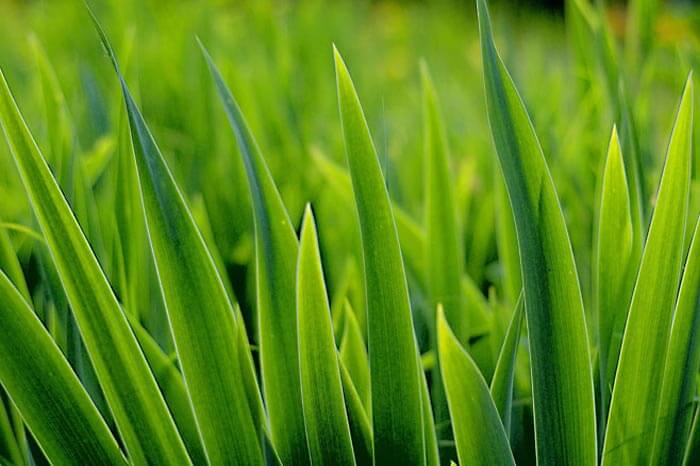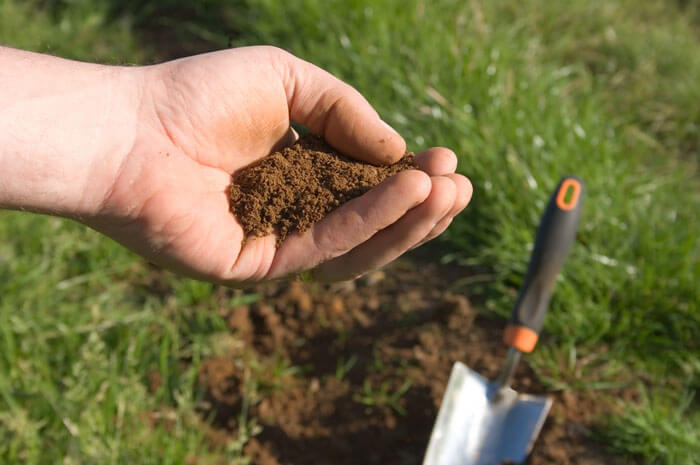
Chinch Bugs
Chinch bugs are the premier pest on St. Augustinegrass lawns and will attack other grasses except those in the coldest climates. Black, winged, and 1/5-inch long, they live and lay eggs in the thatch layer at the root line. Most damaging are the tiny red nymphs, which thrive on sap sucked from grass stems. The adult chinch bug is the scourge of southern grasses. The chinch bug nymph sucks on sap from grass stems, causing them to wither.
Look for:
Starting in June on hot, dry, sunny lawns, look for yellow patches that do not improve with watering. Look under the grass canopy to see nymphs and adults. An alternative is to use the water flotation test. If you see 20 to 25 bugs over five minutes, you need to take action.
Management:
Maintain minimum fertilization, irrigate regularly, keep thatch low, and raise mowing height. Encourage beneficial big-eyed bugs, and use endophyte-enhanced, resistant grass cultivars. For St. Augustinegrass, floralawn and floratam are resistant varieties, however, floratine is tolerant to chinch bugs. If cultivars do not cure the problem, consider spot treatment with insecticidal soap or pyrethrin.
Sod Webworms
You might not notice these nighttime feeders until the damage is obvious. These small, green, spotted caterpillars feed on grass roots, crowns, and leaves. The adult form, a small, whitish gray to brown moth, flies in the evening. The sod webworm, a spotted caterpillar, feeds on grass and eventually becomes a moth.
Look for:
Irregular brown patches of short or uneven turf in early spring, especially in hot, dry areas. On close inspection, you may see silken grass tunnels used for daytime shelter and green waste pellets in the thatch. To check the population level, use a soap drench over affected areas; 15 webworms per square yard require action.
Management:
An extra dose of fertilizer in the spring and increased irrigation can repair the damage. Minimize thatch and encourage ground beetles. Bacillus thuringiensis (BT) is effective on young larvae, and Steinernema nematodes are a useful biological control. Endophyte-enhanced perennial ryegrasses, Tall fescues, and Fine fescues will help thwart hungry webworms.
Fall Armyworms
At 1-1/2 to 2-inches, these striped, brownish-green nighttime feeders are twice as long as webworms. A southern insect, they will move north, either as spring-migrating moths or as caterpillar armies, seeking food in summer and fall. The fall armyworm does its damage at night. Parasitic nematodes will help keep it in check.
Look for:
Chewed, bare, circular areas, similar to the damage of webworms, except that armyworms do not make tunnels. With large infestations, damage can accumulate quickly.
Management:
Use of Bacillus thuringiensis BT spray, some botanical insecticides (such as natural pyrethrum), and parasitic nematodes (such as Steinernema carpocapsae) will help. Encourage predators such as braconid wasps, ground beetles, and birds. Maintain optimal conditions to encourage new growth.
Leafhoppers
These tiny, wedge-shaped, green, yellow, or brown flying bugs suck sap from leaves while injecting toxins into the grass. Lawn damage is usually slight. You can keep leafhopper populations in check with ladybugs and other beneficial insects.
Look for:
Mottled whitish patches with leaves browned along the edge and curled at the tips. Young leafhoppers will hop away, and adults fly away, if disturbed.
Management:
Maintain lawn vigor through regular cultural practices. Encourage lacewings and ladybugs. Use insecticidal soap or botanical insecticides for severe infestations.
Green Aphids
These tiny pear-shaped insects (sometimes called greenbugs) feed on the juices of grass blades while injecting a salivary toxin. They have been causing serious damage to Kentucky bluegrass lawns in some Midwestern states since the mid-1970s.
Look for:
Yellowing of turf, frequently in sunny locations but sometimes extending out from the base of shade tree trunks. Close inspection will reveal the aphids. The use of a 10x hand lens is helpful for identifying insects. Hand lenses are available in different powers at botanical garden gift shops and through gardening catalog companies.
Management:
Hosing down your lawn will discourage aphids from returning. Natural predators such as lady beetles, lacewings, big-eyed bugs, ground beetles, and parasitic wasps should be encouraged. For large infestations, use insecticidal soap, or if necessary a botanical insecticide.



